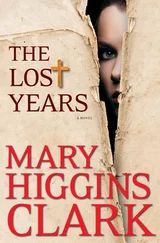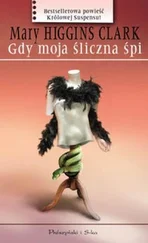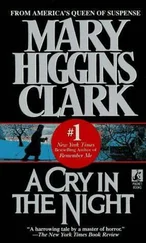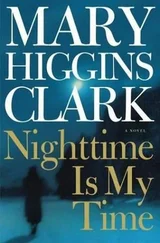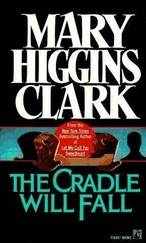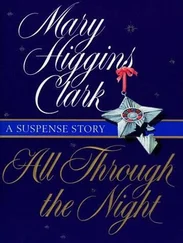Kristina began to cry. “If anything happens to Sally it’s my fault, but Doctor, I was afraid if I brought Sally in yesterday, Ms. Carter would be furious. And Sally didn’t really seem that sick until she was going to bed last night. So I put on the vaporizer and I slept on the couch in her room and I was sure her mother would come home and look in, then maybe we’d bring Sally to the hospital if she started wheezing any harder and…”
Monica stopped the flow of words. “Kristina, this is not your fault. Why don’t you go back to Ms. Carter’s apartment and get some rest. I’m going to stay here until I’m sure Sally is breathing properly. In the morning, if Ms. Carter still has not shown up, I would suggest you leave a note for her and go home. I intend to take up her absence with the authorities.”
“Is it all right if I visit Sally tomorrow?”
“Of course it is.”
A warning alarm from the crib made Monica spin around. As an intensive care nurse rushed toward them, Sally’s labored breathing stopped.

She was about five four, give or take an inch, nice figure, early thirties, short reddish brown hair, expensive clothes,” Detective Barry Tucker told his wife when he called her to say he’d be late getting home. “The body was found by some old couple who told me they walked every day after breakfast.”
He was back at headquarters, having a cup of coffee and grinned at her response. “Yeah, honey, I know I could use a walk every day. Maybe even a run. But the city of New York pays me to arrest criminals, not take walks.”
Again he listened. He was a rotund man in his early thirties with a benevolent expression. “No jewelry, no purse,” he answered. “We figure it was a robbery that got out of hand. She may have been fool enough to put up a struggle. She was strangled. Never had a chance.” His tone now edged with impatience, he said, “Listen, honey, I’ve gotta go. I’ll call you when I’m ready to leave. Good…”
With less patience, he listened again. “Yeah. Everything she had on looked new. Even the shoes, those crazy ones that are like stilts. They looked as though she was wearing them for the first time. Honey, I…”
She continued to talk, but then he interrupted. “Honey, that’s just what I’m going to do. Her suit and coat and blouse and shoes all have Escada labels. Okay, fine. Yes, I know their flagship store in New York is on Fifth Avenue. I’m heading there now with her description, and a description of the suit she was wearing.”
Barry closed his cell phone, took a last gulp of coffee, and looked at his partner. “My God, that woman can talk,” he said. “But she did tell me one useful thing. It’s pronounced ‘Ess- cah -dah,’ not ‘ Ess -cah-dah.’ ”

On Thursday afternoon, Monsignor Joseph Kelly and Monsignor David Fell completed interviewing two more witnesses in the beatification hearings concerning Sister Catherine Mary Kurner. After the Notary had left they sat together in Kelly’s office, discussing the process.
They agreed that the witnesses they had just interviewed had all given compelling stories about their encounters with Sister Catherine. One of them, Eleanor Niven, had been a volunteer in the hospital in Philadelphia founded by Sister Catherine. She had said that at that time Sister Catherine was obviously ill and rumored to be dying.
“She had the most beautiful face and serene manner,” Niven recalled. “When she entered the room the atmosphere changed. We all knew we were in the presence of a very special person.” Eleanor Niven had gone on to testify that she had accompanied Catherine as she made the rounds visiting the patients.
“There was an eight-year-old girl who had had heart surgery and was in very grave condition. The mother, a young widow, was sitting by the bed crying. Sister Catherine embraced her and said, ‘Remember, Christ heard the cry of a father whose son was dying. He is going to hear your cry as well.’ Then Sister Catherine knelt by the bed and prayed. By the next morning the child had begun to turn the corner, and within a few weeks she was able to go home.”
“It’s a story I knew,” Monsignor Kelly said to Fell. “When I was a young priest, I visited that hospital. I never met that child, but I can certainly understand when these witnesses keep testifying to their awareness of Sister’s presence. She had an aura about her. And certainly when she picked up a sick child and cradled it in her arms, it was magical the way the most fretful little one quieted down and accepted the treatment it had been fighting.”
“Our star witness yesterday was pretty interesting, wasn’t she?” Monsignor Fell asked.
“Dr. Farrell? You bet she was. She certainly is pivotal in this process. Emily O’Keefe, Michael’s mother, not only had faith that he would live, but also virtually stopped taking him to doctors.”
“Dr. Farrell mentioned her colleague, Dr. Ryan Jenner,” Fell continued. “I looked him up. He’s made quite a reputation for himself as a neurosurgeon. Dr. Farrell volunteered that on the basis of all the MRIs and CAT scans, Jenner told her that Michael O’Keefe was terminal and should have died. It would be interesting to ask him to testify to that as another qualified witness. I’d really like to question him.”
Monsignor Kelly nodded. “I was thinking the same thing. It would be one more highly respected medical observation to further the cause.”
Then for a long minute, both men were silent, each knowing the thought process of the other. “I am still so frustrated that we can’t learn the circumstances around the fact that Catherine had given birth,” Fell said.
“I know,” Kelly agreed. “We knew she was only seventeen when she entered the convent. It must have happened shortly before that, which would explain why her Mother Superior sent her to Ireland a few months after she became a novice. It suggests that she only realized she was pregnant after she joined the community.
“And no one would have known about it, if that hospital aide who tended to her when she was dying hadn’t noticed Catherine had had a caesarean. And if the aide hadn’t sold the story to one of the gossip rags all these years later when the beatification process began. We never would have found one of the doctors who took care of her in her last illness, the one who verified the story when we questioned him. The fact that he couldn’t in good conscience issue a denial to the press threw gasoline on the flames for the sensationalists, of course…” Monsignor Kelly sighed.
Monsignor Fell replied, “We can’t ignore the fact that we have no information as to her state of mind about the pregnancy. Was the liaison consensual? The early pictures we have show that she was an extraordinarily beautiful young woman. It would not be surprising if she had admirers. Did she give birth to a live child, and if so what became of it? Did she ever talk to anyone about it? These are the questions I have to ask.”
Monsignor Fell realized he was asking these questions without expecting an answer. “It is my job to make sure that miracles are really miracles, and that only people of extraordinary virtue, not extraordinary beauty may someday be listed on the Calendar of Saints,” he said.
Monsignor Kelly nodded and did not choose to mention that ever since yesterday’s meeting with Dr. Monica Farrell his memories of Sister Catherine kept playing through his mind. Maybe it’s because I saw the pain in that lovely young doctor’s face when she talked about breaking the news to the O’Keefes that Michael was terminal.
Читать дальше



